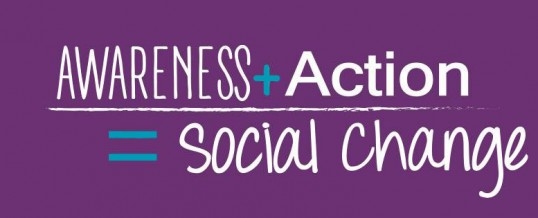 October is Domestic Violence Awareness month. For a number of years, I have been involved in advocacy and crisis intervention for survivors of sexual assault and domestic violence, and in doing so have been outspoken about my work and the organizations that work to provide resources to survivors and their loved ones. In this time, I’ve also become acutely aware of how many of my friends have been affected by this violence, and I’ve done my best to create a safe, affirming space for them to share their experiences.
October is Domestic Violence Awareness month. For a number of years, I have been involved in advocacy and crisis intervention for survivors of sexual assault and domestic violence, and in doing so have been outspoken about my work and the organizations that work to provide resources to survivors and their loved ones. In this time, I’ve also become acutely aware of how many of my friends have been affected by this violence, and I’ve done my best to create a safe, affirming space for them to share their experiences.
As friends and family have come forward with their own stories, I have felt more and more frustrated by the fact that such violence exists in our world. My heart has broken a little bit with each new story I hear, but as it breaks, it makes room to carry a little bit of the weight alongside my survivor friends.
It has been a while since I’ve written much of anything on the subjects of sexual assault and domestic violence, but with the election bearing down on us it seems appropriate to shine a light on these issues, because your vote (not just for president, but all the way down the ticket) will be your voice in how resources for survivors and their families are funded. Just a couple of years ago, the Violence Against Women Act sat in committee in Congress because the Republican leadership refused to bring it to a vote, ultimately hurting victims of sexual assault and domestic violence.
As Domestic Violence Awareness Month continues, I feel compelled to share this sobering set of facts:
– On average, nearly 20 people per minute are physically abused by an intimate partner in the United States. During one year, this equates to more than 10 million women and men.
– 1 in 3 women and 1 in 4 men have been victims of [some form of] physical violence by an intimate partner within their lifetime.
– 1 in 5 women and 1 in 7 men have been victims of severe physical violence by an intimate partner in their lifetime.
– 1 in 7 women and 1 in 18 men have been stalked by an intimate partner during their lifetime to the point in which they felt very fearful or believed that they or someone close to them would be harmed or killed.
– On a typical day, there are more than 20,000 phone calls placed to domestic violence hotlines nationwide.
– The presence of a gun in a domestic violence situation increases the risk of homicide by 500%.
– Intimate partner violence accounts for 15% of all violent crime.
– Women between the ages of 18-24 are most commonly abused by an intimate partner.
– 19% of domestic violence involves a weapon.
– Domestic victimization is correlated with a higher rate of depression and suicidal behavior.
– Only 34% of people who are injured by intimate partners receive medical care for their injuries.
All statistics come from the National Coalition Against Domestic Violence.
Domestic violence doesn’t discriminate; men and women, young and old can be abused. Talk about healthy relationships with your kids, ask questions, and, most importantly, listen. If you, or a loved one, is experiencing something that looks or feels like domestic violence, please know that there are resources for you.
And know that you will always have a safe space to talk about it with me.
